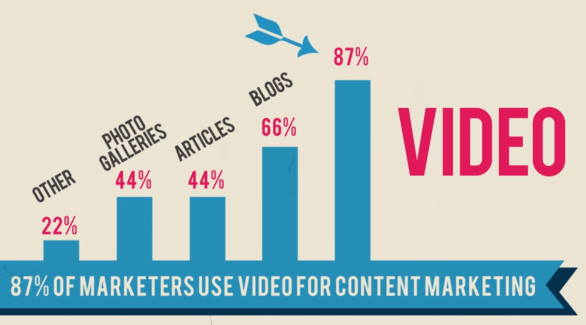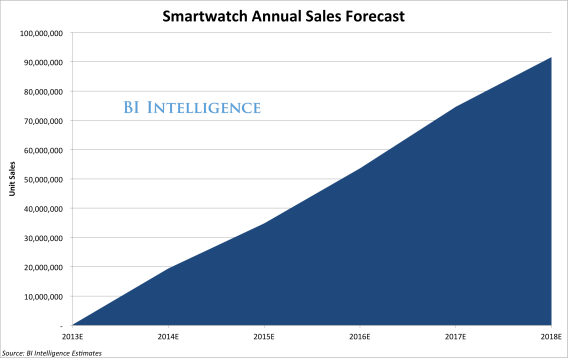Before we’re prepared for the future, we must understand the present.
There are changes all around us – in technology, sports, medicine and especially marketing.
How can we, as marketers, be better prepared for the challenges ahead?
Read on – your audience is counting on you!
Where We Are At Right Now
What The Future Holds
Trend # 1: Mobile First – Mobile Marketing Trends 2016
Trend # 2: Content Marketing Trends 2016
Trend # 3: Marketing Automation
Trend # 4: Digital Personalization
Trend # 5: People-Centered Marketing
Trend # 6: Global VS Local
Trend # 7: Apps, Apps, Apps
Trend # 8: Explosion Of Video
Trend # 9: Crowd-Sourced Content
Trend # 10: VR And AR
Trend # 11: The Internet Of Things
Trend # 12: Ecommerce Trends
Final Words
Recommended Reading: Articles And Guides
Contents
Where We Are Right Now
Each year brings more and more innovations. And it seems like lately things have been accelerating at a lightning speed pace.
Hoverboards are a reality. Underwhelmingly, but technology cannot dictate how it will be used. It is up to the consumers to decide that.
Mobile payments methods are here. They’ve had a rough start – with Google Wallet and Apple Pay not really being such a groundbreaking experience they first claimed they would be.
Bitcoin is ever evolving and there are now specific credit cards that allow you to pay for regular items using your cryptocurrency. On top of those, there’s been an explosion of virtual credit cards. Essentially issued by a big central bank, but with a strong digital component. This allows you to block your card or talk to support via your smartphone.
Digital games are no longer being created solely by large companies. Indie developers are bypassing the old distribution rules. They’re going straight to the consumers on platforms such as Kickstarter and Indiegogo. They also host projects that overshadow the efforts of billion dollars companies, like Oculus did with their Rift VR headset.
And these are just some of the things that are happening now all around us. It is our job as digital marketers to understand the new landscape. One of the most important challenges that we face today is the VUCA environment we have to navigate. This stands for Volatility, Uncertainty, Complexity and Ambiguity.
As things evolve, our digital listening, creation, distribution and understanding methods should too.
Digital Marketing Trends -What The Future Holds
Technology and marketing aren’t the (only) ones that push for innovation. They are not where the future begins. People are the ones that change. Their needs and desires should be met with simple and useful solutions. This also means that the old guard is no longer active.
We’ve learned to not use taxis anymore thanks to companies like Uber, Lyft and Curb. We’ve learned to expect coffee and food delivered to our office in a matter of minutes thanks to Eat24, Zifty and Starbucks. We’ve learned to circumvent ads and bad tv shows thanks to ad blockers like 1Blocker, Purify Blocker and Crystal Adblock and digital distribution products such as Hulu, Netflix and HBO Go.
The future can’t go back. We’re only getting started – more and more disruptive startups are proving that marketers have a responsability to listen to the consumers and deliver exceptional products.
“Good enough” isn’t good. It’s bad. Fantastic, amazing and overwhelming are the new keywords of the Digital Natives and Generation Z.
These are people who’ve learned to see through the fake and shallow marketing and prefer to spend time creating, socializing and inventing the next billion dollar startup. These are the people we should follow and emulate in order to have success as digital marketers in 2016 and beyond.
In the following chapters we will go through the most important trends in digital marketing in 2016, starting with a focus on mobile devices.
Trend # 1: Mobile First – Mobile Marketing Trends 2016
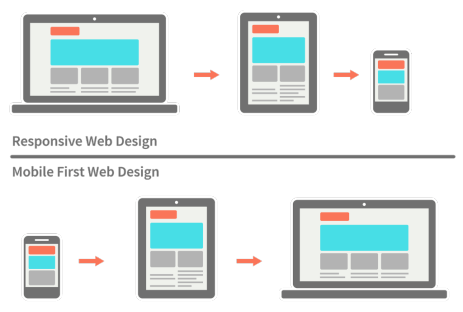
Mobile traffic has overtaken desktop traffic. That can only mean one thing: consumers are looking for faster and more accesible ways to interact with content and the people around them.
The year 2015 witnessed a continued robust growth in mobile use, which has clearly been demonstrated by Mark Meeker’s annual mobile trends report. So, it comes as no surprise that the use of mobile marketing to be one of the most important digital marketing trends for 2016.
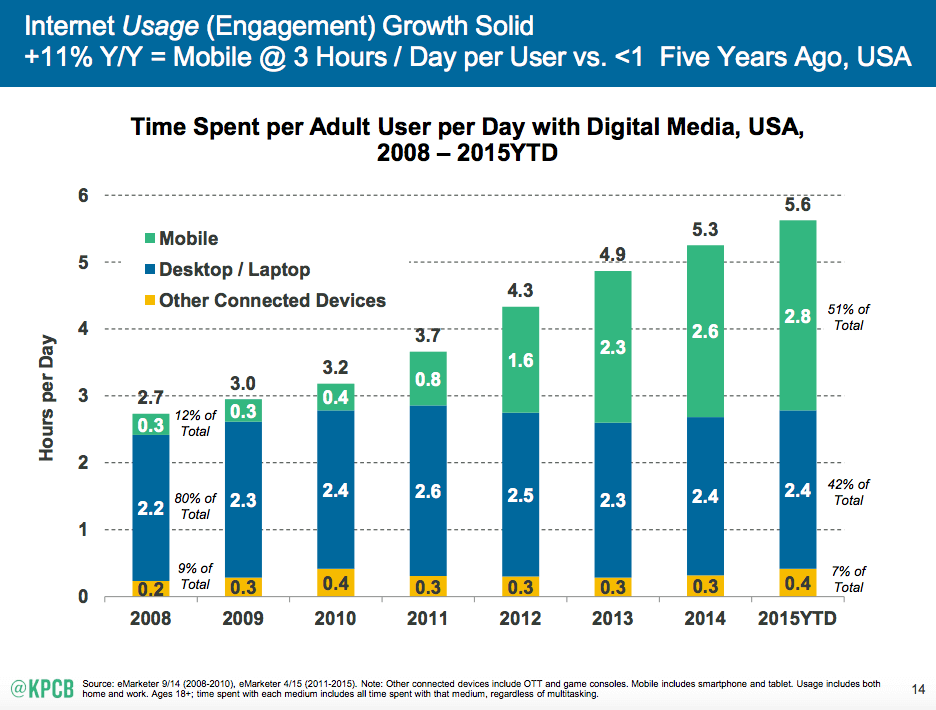
We as marketers need to let go of the old-fashioned sales funnel and instead focus on the Customer Journey and Micro-Moments. These are a much more realistic way of looking at the ways customers engage with websites, services and products.
Mobile will no longer be something that’s an afterthought or something that’s added as a bonus on top of a regular desktop website experience.
Mobile, which was previously known as the second screen, has now turned out to be the primary screen for most digital marketers. Approximately, 75% of Facebook’s revenue comes from mobile advertising, so it becomes evident that Smartphones should be the main focus for marketers now.
We should be focusing on the way our customers use smartphones and mobile devices day by day. And create truly interactive and useful experiences, that entertain, amaze, educate and push the conversation forward.
There have been dedicated mobile apps for years. Completely different instances of websites, that are self-contained and use the hardware as a foundation to adapt. Since the next big mobile boom will concern affordable smartphone markets like India, Africa and the Middle East, not everyone will be able to install a mobile app.
Since Google has started indexing app content and is planning on delivering full previews within its search algorithm, the trend is clearly defined. It started with update that went live on the 21st of April of 2015. The “Mobilegeddon” didn’t really happen and it wasn’t as devastating as hype digital outlets wanted it to be.
The next evolution will see mobile and desktop search data merge even more. Since mobile is part of Google’s algorith for measuring rankings, it will become crucial for the future to have an omnipresence.
This would not mean that companies and businesses should simply create mobile apps just to ride this “mobile first” wave. But rather, they should be looking at user interaction patterns. And try to figure out for themselves what their customers are looking for.
Here are two important strategies for mobile marketing this year
1. Create a mobile responsive design
A responsive web design is a set of techniques that permit a website to adapt to the size of a screen on which it’s being viewed. Since mobile traffic has surpassed the traffic coming from desktop users, it becomes pertinent for marketers to build mobile responsive sites.
Here are the benefits of a responsive design:
- Responsive sites work tremendously well across the multitude of handheld devices in the market.
- Optimizing your site irrespective of the buyer persona, makes their life easier.
- Responsive sites take time to be assembled; however, they have a long life span. Moreover, a unified approach indicates upgrades and support need to be applied on a single space, eventually saving you money and time.
- A responsive site leads to better user experience and has greater chances of them engaging with your products instead of going elsewhere.
2. Understand buyer persona and create apps
Buyer persona lets you know exactly how and why a prospect makes the decision to buy your products or services. You should know how these folks use their mobile device and what describes their usage habits. Do they perform searches on their mobile? Are they texters or just make phone calls?
After you have gathered all this information, the next step is to build a strong persona marketing strategy so that you speak to your ideal prospects in such a way that you’ll be led closer to reaching your objective. One way to achieve this is by creating a dedicated app. Besides being visually pleasing, they are much more functional and accessible to your customers.
Trend # 2: Content Marketing Trends 2016
76% of marketers reported using content marketing in 2015, yet just 37% said that the strategy was really effective, according to Forbes. Blindly pursuing content marketing with the hope that it will bring success would be a futile move. Today’s users are more discerning and savvier about what they pay attention to.
Here are some points to make your content marketing strategy stand out this year
- Create a user person
It’s always a wise move to identify your target market and how to market your products to them instead of relying on numerous customer avatars. The bottom line is to need a user person to effectively implement your content marketing strategy.
Identify your users on social media platforms, YouTube viewers, blog readers and anywhere else you think of hosting your content. It’s useless if you just identify your audience and decide on what they want. Instead, create an actual persona covering their pain points and how they interact with various kinds of content on the web.
- Create long form content
It’s apparent that Google is now making a move from being just an informative engine to a knowledge-packed engine. This means that every piece of content that you upload has to connect with other related content. Google came to the conclusion after conducting an experiment that users are looking for both short answers as well as learn more on the topics that interest them.
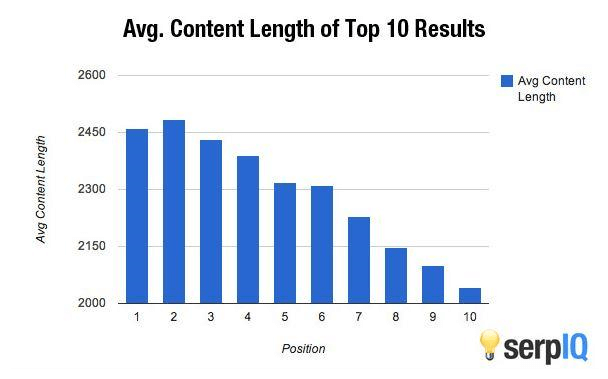
For instance, if you are creating content on mobile phones, find all the keywords that users use to look for that particular phone. The next step is to include a minimum percentage of these keywords into the article without affecting the flow and continuity.
- Include images in your content
When people get certain information, their chances of remembering it three days later is just 10%. However, when the content is backed by a relevant image, 65% of users can retain the information after three days. The research was published on lifelearn.com.
In another study it was found that 46% of marketers use images to their content marketing and storytelling strategies.
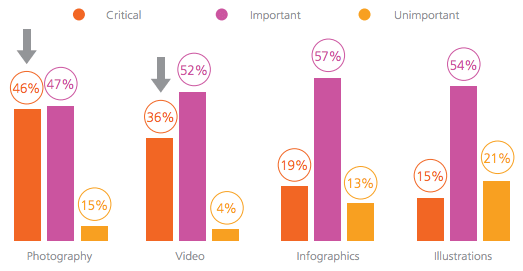
Trend # 3: Marketing Automation
As the VUCA environment becomes much more complex than we can adapt to, there is a need to use machines learning, big data and marketing automation to solve our digital challenges.
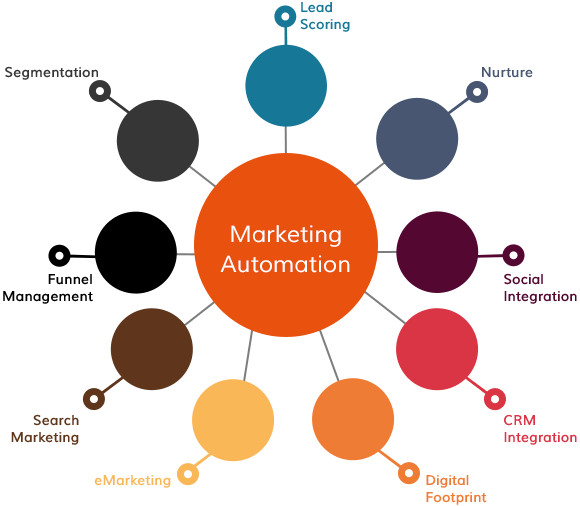
There are companies such as Marketo, HubSpot and Mautic that do deliver on the promise of having a single system that delivers incredible results. And they do so with just a few clicks of the mouse and a very short learning curve. But in the future, this will no longer be enough.
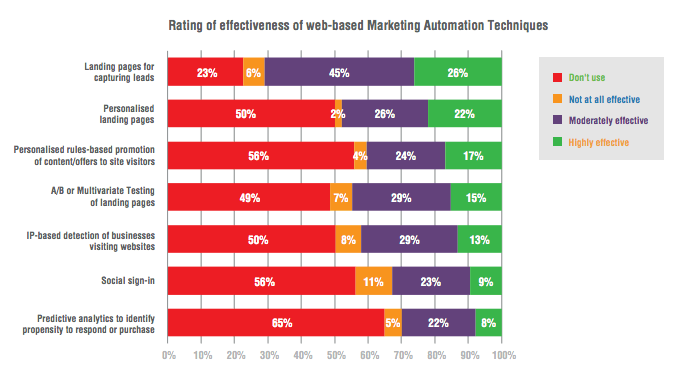
Sending an email after customers have abandoned their carts is something they’ll get used to. Not only that, there’s a good reason to think they’ll actually expect it, since they’re mostly into bargains.
In terms of what customers are using these marketing automation systems for, they range from Predictive Analytics, simple Social Sign-In and A/B Testing for Landing Page all the way up to Personalized rules-based promotion of content to website visitors and the possibility to create and manage custom landing pages to fit the needs and desires of users.

The obstacles faced by companies, small and large, today will become a thing of the past. Software will become cheaper – there are already cheap or free alternatives such as Hubspot Leadin, Mautic and AutoPilot. The workforce will become much more specialized through online-learning platforms like Udemy, Skillshare, Code Academy and Market Motive.
Marketing automation software companies will realize that they need to simplify their systems and offer a lot more training (both online and in-house for clients who purchase the software). Moreso, traditional digital marketing giants are getting in on the automation game.
Facebook, Twitter and AdWords all have Remarketing features and the option to use database emails to create even more customized ads for clients. These 3 social platforms now offer options for agencies to create lead-generating offers and experiences, without any additional knowledge.

Facebook Lead Ads, Twitter Lead Generation Cards and AdWords Contact Form Extensions all function towards the same objective: to offer an easier alternative to bulky software, by relying on trusted, tried-and-true, ad evolutions.
Smaller companies are going the marketing automation way as well. And it’s no surprise, since it leads to decreased time of creative production, increase in sales productivity and savings in the direct marketing department.
It also makes sense on a human level – with a low headcount it’s near impossible to manage all the small things within digital marketing campaigns. Software is here to assist and its benefits can’t be denied.

As clients start using marketing automation apps, they will be looking at a few key areas. For one, Lead Nurturing. Talking to customers, engaging with them and gaining their trust is no small feat. It requires time, dedication and a lot of effort focused on serving their end goals.
This is why clients are also interested in Analytics and Reporting. Further down the line, this will no longer be enough and they’ll desire Actionable Reports. Spcialized software will provide suggestions and will allow clients to plan and start campaigns just a few moments after they’ve understood their current situation.
Inbound Marketing, being such a content and tactics behemoth, is something clients want to get a handle of. And two of the main elements that will drive the medium forward are Digital Personalization and People-Centered Marketing, analyzed below.
Trend # 4: Digital Personalization
Digital Personalization has been with us for some time now. But 2016 will prove to be a turning point, as 3 major categories will differentiate even more than before:
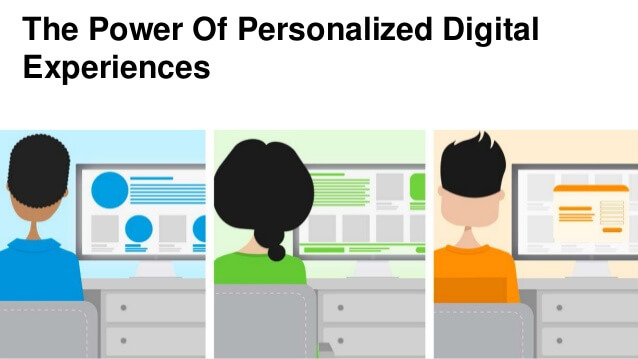
First off, on the software side we have marketing automation systems that allow us to provide better results for customers. We’ll tailor experiences, create custom content just for them. We’ll expect them to react in real-time to match our real-time listening capabilities.
In 2016, if we’re not being relevant to our customers, we don’t exist as marketers or as a company. The saying that applies here is the classic “They don’t care about you, they care about themselves”. Long gone are the days when we could get away with mentioning features better than a competitor’s.
Today is, and will continue to be, about benefits. What’s in it for them? Customers listen if you have something interesting to say to them. Preferably about themselves.
Delivering personalization in a digital environment is much easier than with traditional marketing. It also opens up major questions regarding the length to which marketers should go. We mustn’t forget stories of programmatic automation gone wrong.
Second – hardware. Bionics are here with us today. But it will still be a while before they become mainstream. The next year will show the strength that old marketing methods still have. There are already startups that handle a long-lost art: sending a handwritten note. Startups such as Bond, Inkly and Handwrytten.
As more and more companies shift budgets from TV and print towards digital, those that still use the old ways in new and relevant ways will be the ones that will stay on top.
The final piece of the puzzle is the converge of these 2 categories. What was just a rumor back in 2010 is now becoming more real than ever.
Imagine a scenario not too long in the future where you start your day with a quick email check on your phone. You tap a few links, visit a couple of websites and look at some products on Amazon, but don’t buy anything. You head into work and continue your browsing session on your laptop.
You get an email notification from Amazon, telling you about similar products to the ones you were looking at. Plus a discount on them if you decide to checkout today.
You go about your normal day and on your way home you take a walk through the city center. There, large banners show remarketing ads, using the data collected throughout the day from all your devices and services. And powered by the power of Bluetooth and smart beacons.
Believe it or not, but that version of the future is closer than we think. So the marketer of tomorrow will have to also have experience with Out-Of-Home marketing, not just what we call traditional digital marketing now.

It’s crucial, in a new environment where everything is digital, everyone is online and relevant content, at the right time, wins the game.
Trend # 5: People-Centered Marketing
If Inbound Marketing has taught us anything, it’s that people don’t enjoy being sold to. Not only that, but they absolutely hate being the product. Marketers will continue to adapt, in order to better understand customers and provide increasingly useful solutions to their problems.
In order for marketers to get closer to their users, they’ll need to be everywhere. Everywhere their users exist and act online, marketers need to be there to bring value and open the floor up for discussions. They’ll put pressure on following the customer journeys, as chaotic as they may seem. They’ll focus on education and trust building, not on cheap sales tactics.
The basis of the Inbound methodology is the antithesis to spending money on ads and not wondering if users actually care about those products and services. As time goes by, this “listen to the customer, serve the customer” mantra will continue to evolve and gain momentum across a wide spectrum of industries.
If we look at Uber as an example, it’s not just an upgraded version of a taxi. The entire business model and marketing is created on the foundation of today’s complex digital individual. He’s looking for privacy, he no longer wants to use cash, he likes things to be simple.
He’s attached to technology, which doesn’t necessarily mean he’s detached from social. He’s highly connected to the people immediately around him, but also to people hundreds and thousands of miles away.
Uber didn’t set out to become a better taxi. It was built by focusing on the end user, delivering an exceptional and up-to-date experience. Despite all its moving parts (drivers, cars, laws, bonuses, apps, uber segmentations, etc.), Uber’s powerful digital element allowed it to not only adapt in time, but also remain relevant and increase growth.
This, despite the same privacy concerns that plagued Facebook or those regarding wages, of the peer-to-peer worker companies, such as TaskRabbit.
People-Centered Marketing will flourish and will continue to be a focal point of marketers around the world. As silent black-and-white movies evolved into full-on 3D VR 360° experiences, so will standard run-of-the-mill digital marketing morph into something users can latch onto. That is, if these companies want to stay relevant and try to become an unicorn in their niche.
More and more tools allow us, the marketers, to do more to listen and engage with customers. Tools like Hotjar, Qualaroo, SumoMe, VWO that give us the power to understand users’ actions, to predict their behavior, to create custom personalized content and follow-up using data and insights, not just hunches and past experience results.
Trend # 6: Global VS Local
2013 was proclaimed to be the year of the Bitcoin. The digital cryptocurrency still has many scratching their heads over what it is and how they should use it. Perhaps the bigger question is: What does the exponential increase in Bitcoin transactions prove?
As a decentralized, digital currency, created by people, it’s got a shroud of mistery around it. From movies to magazines, from scandals to founder mysteries, there’s always something new to talk about bitcoin. The bigger story is that for the first time there is the hope, somewhere on the horizon, of one universal currency.

Not just one for Europe or just one that’s used in the physical world. But one that could be truly used both online and offline, in any country around the globe, without fear of penalties or different exchange rates.
Digital has made everything easier, faster and closer. Facetime, Facebook video calls and Skype allow us to talk and engage with people who’ve never dreamed about this. Moreso, Skype has big plans for holograms – as early as 2013 they’ve talked about the capabilities of performing holographic video calls.
This isn’t surprising, as Microsoft, Samsung and Facebook are working on their own version of VR headsets (a trend covered lower on our list).
The next changes will come from all industries. America’s Got Talent is holding online auditions and it’s only the beginning. With stories like Justin Bieber being discovered on YouTube by Usher, it’s no wonder that Vine stars are popping up left and right. And their chosen format is 6-second long videos.
Aerial transport drones and quick in-city delivery systems will make distances seem even shorter. And as businesses start off as global, with a digital foundation, this effect will be felt all around the world. To quote Rammstein’s iconic song, soon we’ll all be living in Amerika. Globalisation is both a blessing and a curse.
Big data and smart actionable analytics will help the marketers of tomorrow adapt easily to any new market situation. This will lead to increased personalization and increased profits.
In essence, if your business wants to ship something to Mexico or The Cook Islands, the costs will be similar. Glocal (global+local) will continue to become a standard in terms of customer service.
Customers will desire almost identical products, thanks to customized marketing techniques. What will differ will be the experience delivered, making the user feel like he’s the central part of the discussion.
Trend # 7: Apps, Apps, Apps
The old saying “There’s an app for that” becomes more true than ever. The need for simplicity grows so users feel a need for further developments in each area of their life.
We now have apps for pretty much everything: controlling our thermostat, modifying the volume and track for our speaker system, check Wikipedia, check live video feeds of our home security system and even check your health.
Google has been pushing a lot of new initiatives in that space as well. Their most recent one? Trial Run Ads. Interstitial in-app ads allow users to test an for 60 seconds, without actually installing in on their device.
This idea came about when they discovered that 1 in 4 installed apps is never used. To put it another way – there’s nowhere to hide from apps anymore…not even in ads within other apps.
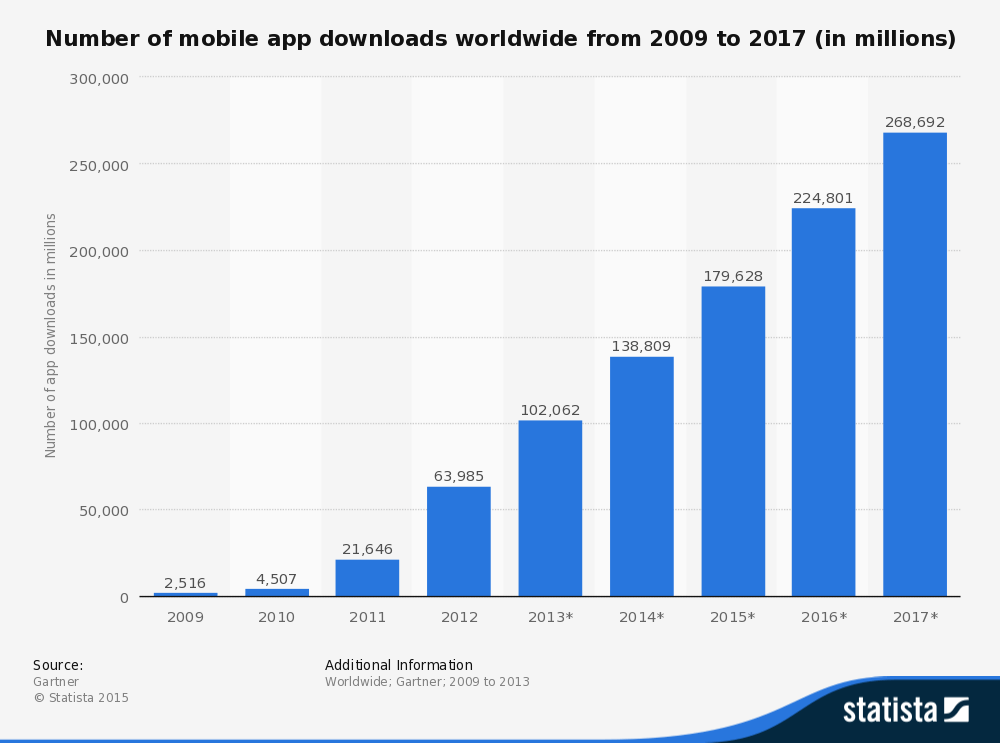
So why are apps so popular? There are a few reasons to think about.
First, smartphone sales have grown, thanks to newer markets opening up. That’s half the story. Those new markets need a combination of competent service providers and reliable hardware manufacturers.
Since the middle-aged have already gone through the motions and are mostly satisfied with their current device, there are 2 age groups that will grow in importance: the young and the old.
The old (50+) come to a stage where they need to keep in touch with family and technology is a great way to reduce distances. They also don’t want to be left behind and they become more tech-savvy.
The young (3-12) need ways to spend quality time while they’re not in school or playing outside. They keep up with friends, learn online and have fun in a (mostly) safe digital environment.

Second, attention spans have been dropping for years. That means that even if people did have more free time, their focus is very low. They don’t have the mental capacity to sit down and read a whole article on their mobile device.
The same goes for games and entertainment. Most major games provide 2-5 minutes worth of fun before the energy level drops and users are forced to pay real money or wait. Vine is increasingly popular because its videos are only 6 seconds long.
Third, getting to a user’s app drawer or even launch screen is like having access to their email inbox. If notifications are activated, developers can send messages related to the game itself or other games they’ve developed. Give them something for free and then keep them hooked with micro-rewards, events and constantly updated new content.
Marketers need to take notice of this trend and analyze user behavior in relation to mobile apps and games; we need to figure out what gets people hooked on a product and how we can use those triggers in our campaigns and services.
Trend # 8: Explosion Of Video
Video is much easier to digest than text. So are images and slideshows. If a picture is worth a thousand words, people are jumping straight to the most accessible format there is.
2015 was a fantastic year for video marketing but this year it has the potential to be greatly transformational. It has been predicted that 80% of all internet traffic by 2019 will be from videos-a 64% growth compared to the figures in 2014.
According to Tubular Labs, approximately 654.7 million videos were uploaded by 66.7 million businesses on to more than 30 platforms in 2015 alone.
Younger and younger generations go online and need new ways to communicate with people and understand the world around them. We could say they transition easily from TV, which is a primarily video medium, to the internet, which is an everything-medium.
The other side of the puzzle is easy to decipher. These generations are using apps like Snapchat and Vine to express themselves, posting things that are either ephemeral or very short in nature.
There’s a much more emphasized focus on fun, experimentation and living life to the fullest. This becomes important in conjunction with the idea that it’s easier to become a star or a celebrity nowadays.
Justin Bieber was discovered on YouTube and pushed towards stardom by Usher. Smosh and Fred started on YouTube and were given the chance to work on real TV movies.
There are now ways to audition online and try your hand at becoming a star. The skillset required in these competitions and channels doesn’t seem that extraordinary. Couple that with this generation’s feeling of entitlement and you’ve got people who think stardom is easy and they’re willing to give it a shot.
Individuals are also getting more and more interested in realtime communication. This makes apps and services like like Blab, Periscope and Meerkat ideal for posting quick video messages, show what’s going on around them and participate in group chats.
In addition to this, people are following the footsteps of superstars like PewDiePie and starting their own YouTube or Twitch channels streaming their gaming videos and commenting on them. Turning a hobby into a profession.
The other big push is coming from companies, agencies and individuals using Content Marketing for education, branding and sales. Since they’ll continually update their user personas, they’ll understand that video will no longer be a “a would be nice to have”, it will shift towards “is necessary to have”. Just like the “mobile first” mentality will take over from “mobile responsive”.
Video in 2016 will be characterized by a few elements:
- Realtime video communication becomes dead simple:
More platforms will emerge, existing platforms will cater to new generations’ needs and desires and adapt with a simpler interface and a focus on community features.
- Video game streaming goes mainstream:
As Amazon snags Twitch for close to 1 Billion dollars, it’s safe to assume that this is no longer something kids do in their parents’ basements at night. This sale, together with PewDiePie’s massive success, legitimized video game streaming.
- New video extensions make video even more attractive:
360° and Virtual Reality will bring exciting ways to consume video and interact with the world around us. The major players in this game are Samsung Gear VR, Oculus Rift (bought by Facebook for 2 Billion dollars), PlayStation VR and Microsoft HoloLens.
- Branded video content
Emphasize more on branded video content. This is because marketers have explored the power of uploading branded video on to sites like YouTube and then promoting them on social media platforms. It should be noted that YouTube rakes in a whopping 4 billion views each day.
Branded videos can include behind-the-scenes footage, product promos, dramatic shots and interviews. You can also create a video from your existing content using modern video solutions.
- Video Integration
Marketers will integrate videos into their home pages and product pages in 2016. Remember that your homepage has to look compelling and this can be achieved by including videos. Check out these 16 fabulous sites with video backgrounds on their home page.
For your product page, you can use on-site videos. This can be helpful in industries where the services and products are unfamiliar of complex. Short videos guide users through the buying process, thereby boosting sales. In this case too, you need to understand persona marketing and create content that appeals to your target audience.
Trend # 9: Crowd-Sourced Content
Platforms like Indiegogo, Kickstarter and now Fig are leading the way in making consumers directly involved with the production process. Moreso, Fig provides an investment option. You pay a certain amount of money and, depending on the game’s sales performance, you get to reap the rewards further down the line.

User personas will become an even stronger foundation for marketing plans. Marketers will have to account not just for platforms and objectives, but also micro-moments and evolved customer journeys.
The future holds great promise for companies and content creators that actively listen to their audience and produce specific content just for them.
Since reviews and word-of-mouth marketing are the best ways for happy users to bring in more customers, companies like Birchbox, Loot Crate and Faithbox will thrive. They’re already pushing for the idea of unboxings and pictures posted on social-media platforms. The roles will turn soon switch, as YouTube sensations like Michelle Phan are creating their own subscription sites – Ipsy.
Quizzes and polls become much more important to media companies and marketers alike. These tools allow them to understand their audience better and craft much more personalized content around that.
Even though early attempts at combining creators with consumers haven’t been so successful (see Curiosity/Godus for example), marketers will learn from their mishaps and try again. After all, the essence of the #AskGaryVee Show on YouTube is represented by fans asking questions.
The answers are filmed and transformed into video content. All these words will be gathered and edited into Gary Vaynerchuk’s next book. And the best thing about it – it’s all transparent. The show’s purpose was announced early on.
Consumers get in on the action and they become an active part of marketing processes, while becoming marketers themselves.
Trend # 10: VR And AR
Google, Microsoft, Facebook, Samsung and Sony are on to their next technology trends: virtual reality and augmented reality.
While both of these are older concepts, they’ve re-emerged. This time, not as gimmicky entertainment pieces, but as presumably useful parts of society. Used in medical environments, sports, car manufacturating and architecture, VR and AR will become an integral part of the way we look at the world around us.
While Google Glass turned out to not be as revolutionary or useful as they’d hoped, talk of a second version makes them hopeful that they’ll soon be able to push forward with better ideas and design.
YouTube 360° and Google Cardboard are both projects that are gaining momentum and content creators are using them to craft amazing experiences. Experiences that until now would’ve been limited to large companies that had access to the expensive technology that was needed to produce them.
But just like 4K and 1080p before it, there’s a trickle down effect. Where we now have phones that shoot 4K video, while just a few years a go 1080p seemed like the golden end-all standard.
So once again, technology gets easier to use and content creators take advantage of this and use it to differentiate themselves.
A new unlikely player emerged. Microsoft’s HoloLens is a combination of VR and AR, that they’re describing as “the first fully untethered, holographic computer, enabling high-definition holograms to integrate with your world”. The clearest memory of holograms for most of us is Princess Leia in Star Wars.
What this all boils down to is that we’re no longer living in the present. Because technology has accelerated so drastically, we’re now living in the future. We’re experiencing things and situations what were reserved just for sci-fi movies or games.
We will be able to be on the surface of the Moon or Mars. We’ll take part in virtual reality yoga sessions. We’ll go to virtual concerts and go close to orchestras in concert, without disturbing them.
Next year, more than ever, marketers will have the difficult task of focusing on creating user experiences, instead of just leading customers towards purchasing opportunities.
Trend # 11: The Internet Of Things

Defined as “the network of physical objects or <<things>> embedded with electronics, software, sensors, and network connectivity, which enables these objects to collect and exchange data”, IoT for short is already peeking its head out in different ways.
Amazon Dash is the most widely publicized implementation of this concept. It’s a physical button that you press when you run out of basic things around the home (groceries, toilet paper, washing detergent, etc.). This sends a notification to your phone and account that your order has been received and will be delivered.
You do get a chance to cancel if you feel you’ve made a mistake. It’s a very simplified way of shopping and, in essence, interacting with a digital medium.
Raspberry Pi Zero is a computer the size of your credit card that costs just $5. While itself is not ready to be used straight out of the box, adding just a few more peripherals, like a digital camera module and a battery pack, will tranform it into an entirely useful product. For surveillance or entertanment purposes.
Fitness bands, sleep trackers, health bands are newer implementations of older concepts like calorie and step counters. But this time, since they’re specifically built for this purpose, they pack in a lot more technology. And provide more data. Even though the health benefits derived from using these devices are still debatable.
Smartwatches are hotter than ever. With Google and Apple both creating their own versions of their main mobile operating systems for use on wrist-worn devices.
They’re becoming a product category of their own, with watch companies getting in on the action, releasing tech-infused implementations of their own. The dream of having a communication device on your wrist is alive since the early 50s, with the Dick Tracy watch.
Whether or not this will be as groundbreaking as the iPhone when it came out, is still anyone’s guess. But with smartwatch sales not showing any signs of slowing down, marketers have another medium to worry about.
Having an omni-channel strategy will become the norm. As new channels and products pop up, marketers need to be right there with the consumers. To educate, delight, understand and drive sales.
Trend # 12: Ecommerce Trends
Ecommerce sales continue to grow rapidly, generating close to $300 billion in the US alone in 2015. Even then, it still remains a tiny percentage of the total retail sales at around 10%. So what can ecommerce retailers do to improve their sales online?
- Smartphone revenue will overtake desktop
According to Stuart Mc Millan, deputy head at Schuch, this year more and more firms will have increased revenue from Smartphones compared to desktops. He states that companies have been heavily investing in mobile users’ experiences, which is excellent for improved conversion rates. Consumers, who shopped on mobile, showed greater confidence in 2015. He further adds that this trend is set to continue.
- Reduce reliance on Google
In the year 2015, Google made it extremely difficult to get free search traffic. The three snack pack update, for instance, indicates that for the majority of ecommerce searches, the mobile results page will be dominated by paid ads. As a result, users need to scroll down for organic links.
Marketers are now building strategies for long term acquisition and customer retention by finding ways to build a decent audience outside Google, states James Gurd, founder of Digital Juggler.
- Retailers to have their own staff for their online stores similar to physical stores
This year will see brands building virtual sales forces. They will be different from customer service representatives, who normally respond to or aid customers once the sale gets completed. Instead, they will be trained to help and sell to prospects even before the sale has been made. The sales force team will be similar to salespeople found in physical stores, who are trained to assist customers during the process of buying and at checkout.
Final Words
As traditional watch companies become smart, software companies move into hardware and social-media platforms become news organizations, it’s anyone’s game. The best idea for the user is the one that wins.
Money becomes a non-issue. Space, location, distance – all disappear and make room for seamless experiences. The user is in control nothing else is relevant anymore. He’s both a content consumer and an (incentivized) content creator.
Marketers need to understand this new playing field. Since these 10 trends are only blimps on the radar right now, they should think 5-10 years forward and plan accordingly.
Recommended Reading: Articles And Guides
Articles
15 Digital Marketing Trends for 2016 That Could Destroy Your Business
10 Digital Trends every Digital Marketer should know about in 2016
Five trends in digital marketing to success in 2016
What will be the most important digital marketing trend in 2015-2016? And why?
5 Digital Marketing Trends to Watch in 2016


